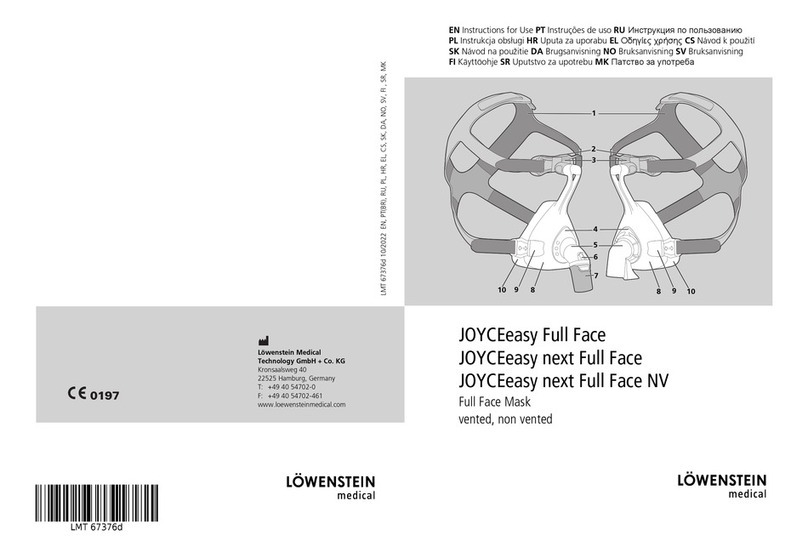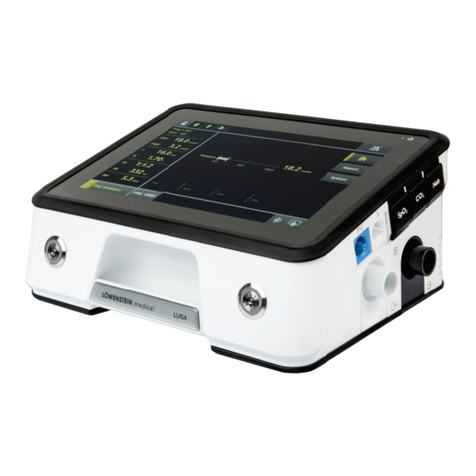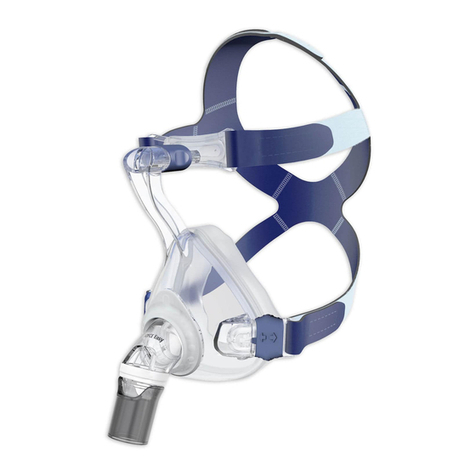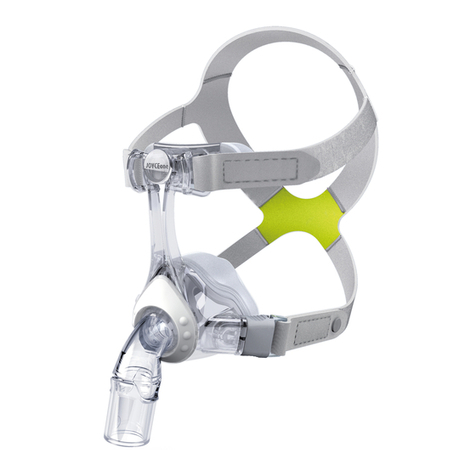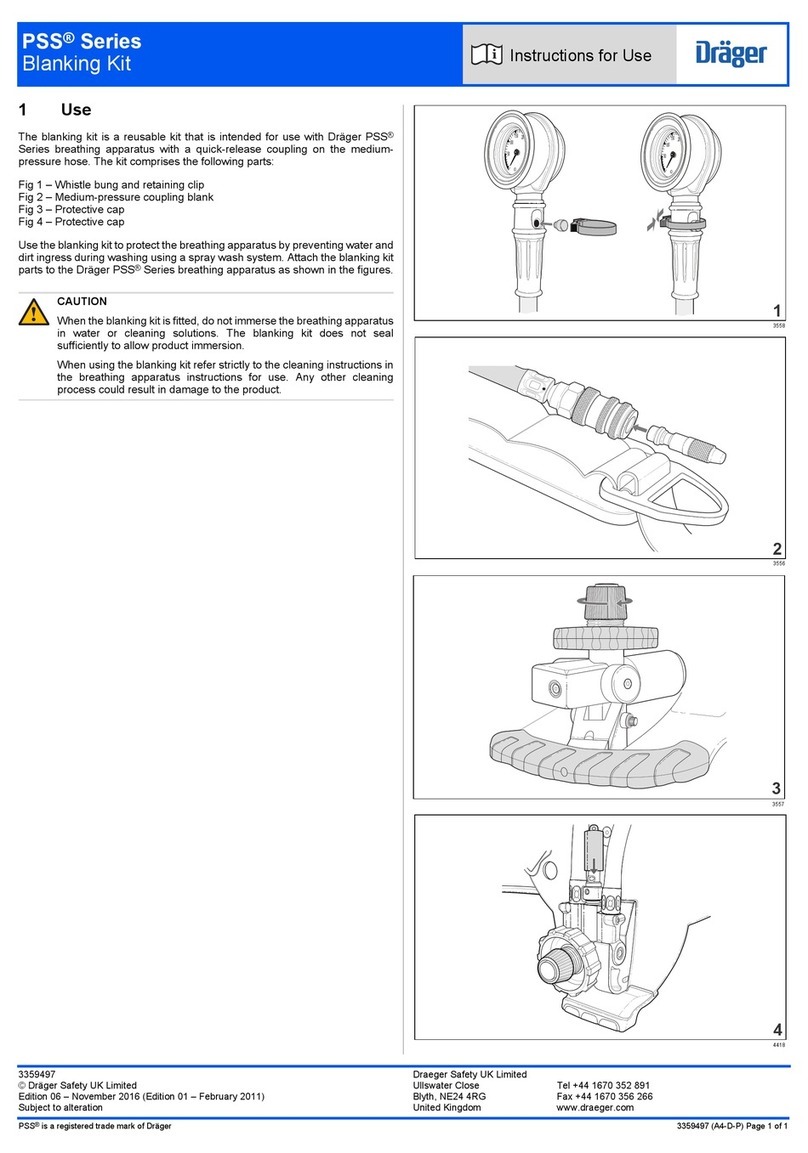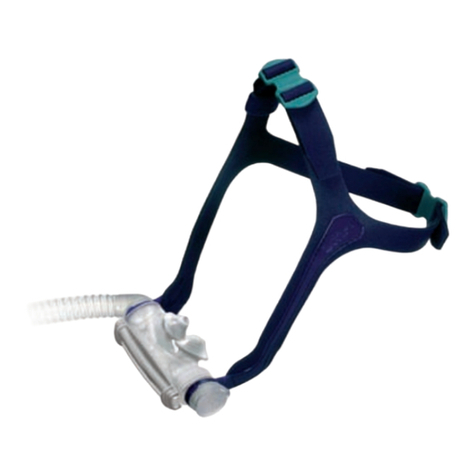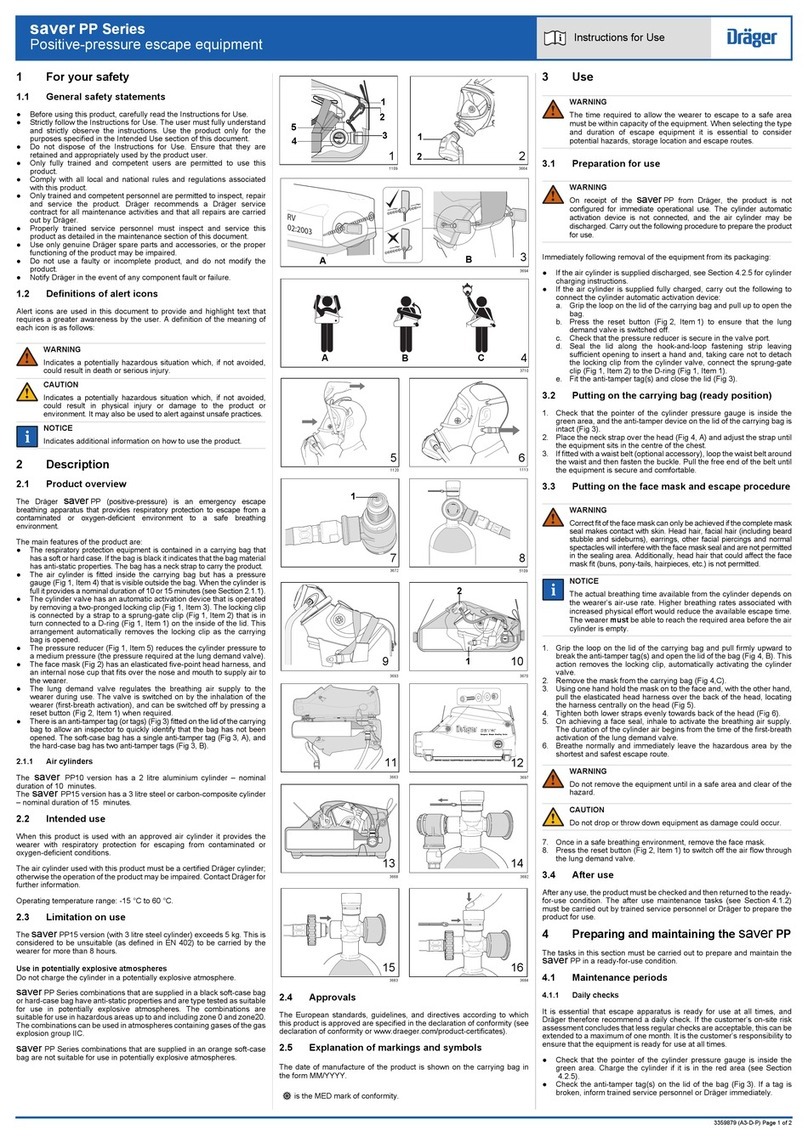
6EN JOYCEeasy
WM 67630h 04/2022
2.1 Safety information
2.1.1Safety information
Risk of injury from mask parts breaking
off!
Deteriorated mask parts or those under
severe strain may come off and put the
patient at risk.
Note useful life.
Check mask parts regularly and replace
prematurely if necessary.
Risk of injury from excessive leaking!
Excessive leaking may lead to under-supply
to the patient.
Activate low pressure/leak alarms on the
therapy device.
Use the correct mask size and check that
it is securely in position.
Risk of injury from the supply of
oxygen!
Oxygen can deposit on clothing, bed linen
and hair. In conjunction with smoking,
naked flames or electrical equipment, it can
cause fires and explosions.
Do not smoke.
Avoid naked flames.
Do not use electrically conductive tubes
(exception: breathing tubes which can
be heated electrically).
Risk of injury from oxygen therapy!
Oxygen therapies can lead to side effects in
case of incorrect use or dosage.
Only administer oxygen as prescribed by
a physician.
Follow the instructions for use of the
oxygen system and therapy device.
Risk of injury from re-inhaling CO2!
If the mask is used incorrectly, CO2 may be
re-inhaled.
Do not close the openings of the mask.
Only apply the mask for a prolonged
period if the therapy device is running.
Only use the mask within the quoted
therapy pressure range.
Do not use the mask on patients who
cannot take it off themselves.
Monitor patients with obstructive and
restrictive lung diseases individually
when using JOYCEeasy masks.
Risk of injury from slipping of the
mask!
If the mask slips or falls off, the therapy is
ineffective.
Monitor patients with restricted
spontaneous respiration.
Activate low pressure/leakage alarms on
the therapy device.
Monitor patients with obstructive and
restrictive lung diseases individually.
Patient endangerment through
application of mask during anesthesia!
When the nasal mask is used during
anesthesia, the anesthetic gas supplied can
escape through the mouth and endanger
the patient.
Do not use nasal mask during
anesthesia.
Risk of injury from lack of cleaning!
The mask may show contamination which
may put the patient at risk.
Clean the mask before using for the first
time (see section entitled "Cleaning and
hygiene treatment").
Clean mask regularly.
